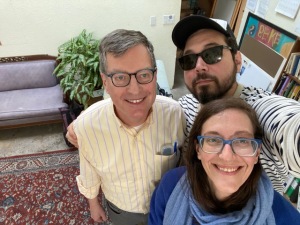
Previously published at WGBHNews.org.
A little after 11 a.m. this past Saturday, I eased myself onto my bike and headed toward Boston. My destination was Northeastern University, where I teach in the journalism program. I wanted to see if it was realistic to commute by bicycle once in-person classes resume this September.
What prompted this experiment was a story in The Boston Globe. According to Steve Annear, even as ridership begins to recover from the pandemic, more passengers are refusing to wear masks — and the MBTA is taking a decidedly laid-back approach to enforcement.
“What I’ve been doing as a rider whenever I see people not wearing a mask is I’ve been getting off in between stations and running to the next car, hoping the people on the new car will all be wearing their masks,” a rider named Victoria Kroeger told Annear.
Terrific.
For more than 20 years, I’d commuted to Boston from the North Shore by car, a soul-sucking ordeal that grew worse every year. Then, in 2014, we moved to West Medford, returning to a neighborhood where we’d lived for a few years in the early 1980s. I discovered the joy of walking to the train station and then hopping onto the subway at North Station. Commuting became almost a pleasure. We all love to complain about the T, but it rarely let me down.
That doesn’t mean, though, that I want to get onto sealed trains and subway cars with hundreds of strangers, any one (or dozen) of whom could be carrying the coronavirus that causes COVID-19. Especially if maskless morons are spewing aerosolized particles of disease into the air.
Which is why I was on my bike Saturday, maneuvering on side paths and urban streets. From the Alewife Greenway I picked up Mass. Ave, then headed toward Harvard Square. From there I followed the Charles River to Boston and back to Mass Ave. I turned right onto St. Stephen Street at Symphony Hall and from there pedaled to my office, which I couldn’t actually get into because of pandemic restrictions.
I’d covered 8.9 miles in 53 minutes, a little faster than it would take by public transportation. I was no worse for the wear; but it was a hot day, and I was sweating freely. If this had been an actual commute, I’d want to take a shower — but the locker rooms at the campus recreation center are closed for the foreseeable future because of the pandemic. (And I wouldn’t take the risk, anyway.)
I’d proved that I could do it, but I hadn’t convinced myself that I would do it. After shattering my elbow in an encounter with a wet speed bump 10 years ago, I didn’t ride a bike again until last year. So I’m ever wary about the hazards of urban biking. I’m also not going to ride in the rain or in the dark. For me, biking to work is a maybe option under perfect conditions, but hardly a comprehensive solution.
So what am I — what are all of us — supposed to do?
A couple of years ago, we decided to become a one-car family. My wife takes it for her short drive to work, and she has no other options. I’ve thought about trying to lease a car until V (Vaccine) Day. But I’ve heard from many of my colleagues that they’re also thinking of driving because of concerns about the T, so it seems more than likely that parking will be a nightmare. I’ve thought of relying on Lyft, but I’m not convinced that would be a COVID-free experience, either.
The message on the MBTA website is simple and direct: “All riders and employees are required to wear face coverings while riding the T.” But will the T start doing a better job of enforcing it? What about social-distancing? What about air quality? What happens when a subway car stops, the electricity goes off and air circulation is cut off?
These are things we all ought to be concerned about, especially when thousands of college students from all over the country — most definitely including states that are surging now — arrive in Boston a few weeks from now.
It had been a couple of months since I’d been on campus, so I spent a little time looking around. I was surprised by how many students were sunning themselves on Centennial Common — not huge numbers, but enough to make the campus feel at least semi-populated. Then I headed home, this time skipping the river route and taking Mass. Ave from Hemenway Street into North Cambridge, shaving a half-mile off my trip.
It was fun. But I couldn’t help but notice how light traffic was compared to what it will be like on weekdays after Labor Day. Maybe some hardier, younger folks than I could make the transition to commuting by bike. But I’m almost certainly going to have to depend on the T, and I’m not going to be alone.
Multiply my story, and my concerns, by tens — if not hundreds — of thousands, and you’ve got an idea of what challenges the region is going to face this fall. According to the T, there were 1.16 million trips taken in February, the last month before the pandemic hit. Safe public transportation is indispensable to our economy and to the well-being of our community.
We can’t let the T become a vector for a new COVID surge. We have to get this right.
Talk about this post on Facebook.






